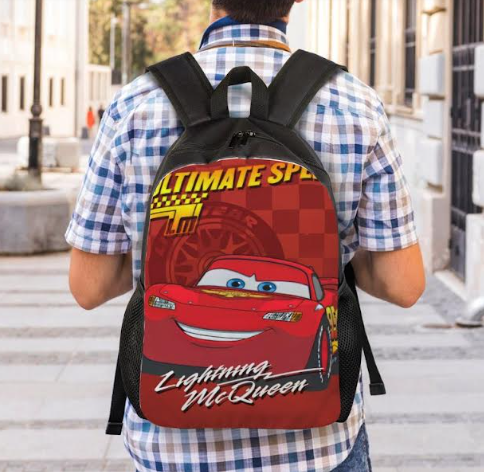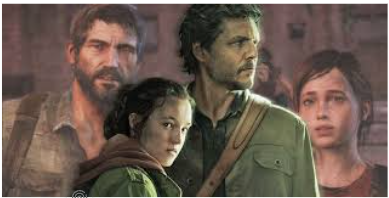As the sun beats brightly above my head and local stores start placing school supplies on display, only one thought crosses my mind: everything I buy here could feed a family for almost two months. It may seem like insanity, but every time you buy a new set of pencils or even a whole new wardrobe, you spend the amount of money that one average family would need to be able to eat that month. It does not help that most teenagers today opt for the more expensive, more lavish items, hiking annual spending metrics even higher.
Wasteful Traditions
The senior backpack tradition has been a lively part of the school’s culture for many years. It has been tradition for students to buy a children’s backpack with a tv show or cartoon character on it for their senior year, perhaps as a final farewell to their childhood. At the Quakertown Community High School, there are 456 seniors this year. If each of them were to buy a small, $17 Lightning McQueen backpack from Amazon, that would add up to a grand total of $7,752 spent on backpacks alone! I calculated the total cost using the cheapest backpacks that could be found on a quick trip to Amazon’s website. It doesn’t even address the fact that most people buying a new backpack would look for the more expensive name brands, or the fact that seniors consist of only one of the four grades at the high school constantly spending on new backpacks. Why are these numbers so high? Why don’t students just buy one at the beginning of freshman year and call that good? The beginning of a school year can feel like it should be a fresh start, so many students feel opposed to reusing school supplies from previous years, increasing overall spending. Even fun traditions such as senior backpacks can create a big dent in family finances over the years.
The Consequence of Picky Shoppers
According to Feed the Children, an organization dedicated to ending childhood hunger and providing families with the information they need to join the fight, it was predicted that families would spend an average of $875 on school supplies. Using an inflation and historical calculator, that would have been about $43 in 1967. Inflation has certainly affected prices, but it is not the only factor in the equation. As name brands come out with more and more products with increasingly high prices, the strain school supplies have on families simply grows. As found in Stella Shon’s USA Today article, an average family spends $475.25 on groceries each month. That is half of the amount students spend on their school supplies. Groceries only take food items into consideration, as well. There are many other facets of living in need of attention — and money. When the weather begins to cool and warmth becomes a “hot” commodity, a greater need for coats and warm clothing emerges. Some of the most expensive winter coats from Nordstrom can have prices in the thousands! A regular winter coat off of Amazon can be brought down to about $30. This simple necessity becomes too large a fraction of the limited budget that comes with back to school shopping.
Quakertown Fights Back
In Quakertown, the issue of overconsumption is taking its toll on its resident families. Quakertown students will come to school, complaining about hunger, or shivering in the winter because they don’t have a coat or consistent meals. This can affect attention spans and motivation to learn. Coming to our rescue, two heroes emerged to help fight back. Mrs. Honrado, an instructional aide at the Quakertown High School, and Mrs. Derewal, the Quakertown 9th grade house administrative assistant, have been working together on a brand new project: The Panther Pantry.
“The closet started last year when I had a student who I noticed was in need of some clothing and I brought him in some stuff from home,” Mrs. Honrado explained in an interview, “and then I realized there was a bigger need…” She then went on to explain how she had noticed her students and others around her with the same needs as the first student she helped.
She and Mrs. Derewal, with the help of their “Sunshine Club” amongst the staff, began to collect donations from anywhere they could find and gather it all in their Panther Pantry. They found “a space where kids can go and just get stuff that they need, no questions asked”. With my next question, I was shocked to discover that the school had not funded any of this. All of the supplies collected for this pantry had come from the homes or pockets of the staff and parents, or from various organizations willing to help out, such as Staples and food pantries. The school contributed nothing to this noble cause, further displaying the lengths amazing people will go to help out their community. These two heroes, along with their whole staff, truly cared about the wellbeing of their students.
Thanks to this effort, the Panther Pantry is stuffed with clothing like brand new coats and backpacks, and health items such as deodorant and toothbrushes. With only three or four consistent students accepting their help, Mrs. Derewal and Mrs. Honrado hope to further advertise their pantry for all those who need it. Their only obstacle is embarrassment.
“We know from teachers that the need is greater out there, but students actually asking for help and… actually getting past having to ask for it is actually our issue,” Mrs. Derewal explains, recognizing that sometimes pride can get in the way of getting the help you need. They remain optimistic, however, claiming that they do have plans to put out a rack for students and parents to come claim some much-needed coats and sweatshirts. That program comes with the phrase, “sharing the warmth, one coat at a time”. With this, hope can be found again for those families who struggle with the demands of the school year.
How Can We Help?
School supplies are a necessity for learning, that much is true. Whether students throw their money away on expensive name brands or struggle to afford warmth over the winter, we all need to be considerate when we make our yearly back-to-school purchases. It is not a mark of shame to buy the cheaper option, it is the smarter option. Being able to teach children and young adults to make smart decisions with their money will better prepare them for living independently. If we as students can come together to defeat the stigma around name-brands and store-brands, we can all learn to live in better harmony with one another. I am not in any way saying that the school should destroy the senior backpack tradition, simply suggesting that when a friend and fellow student cannot participate due to money struggles, don’t stand idly by. Be there for them. Spending intelligently can improve your life and the lives around you, so it won’t hurt to use that old pencil case for a couple more years and save the money for something more important. This way, we can all reduce the size of the school supply graveyard that we have created. Lightning McQueen deserves better.










